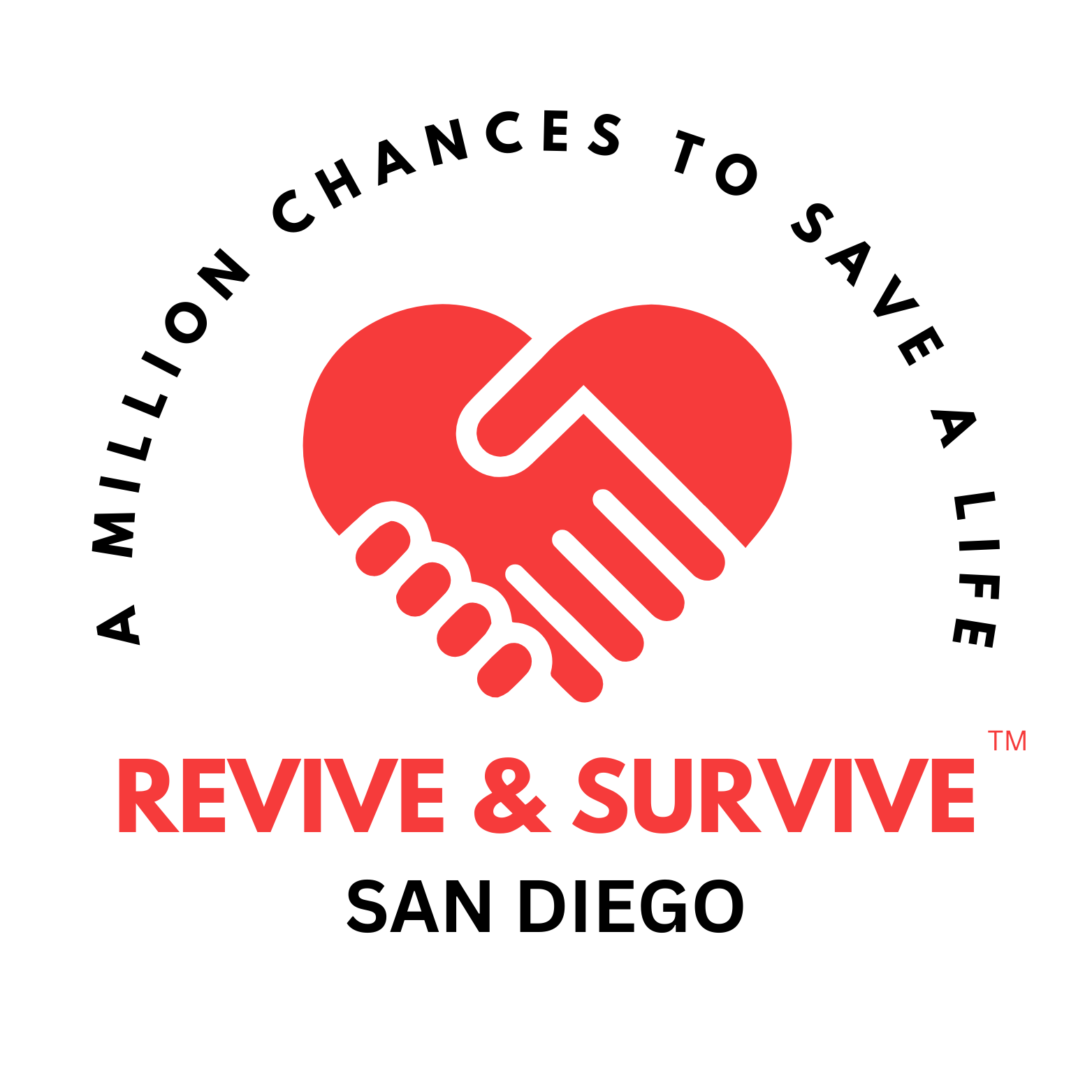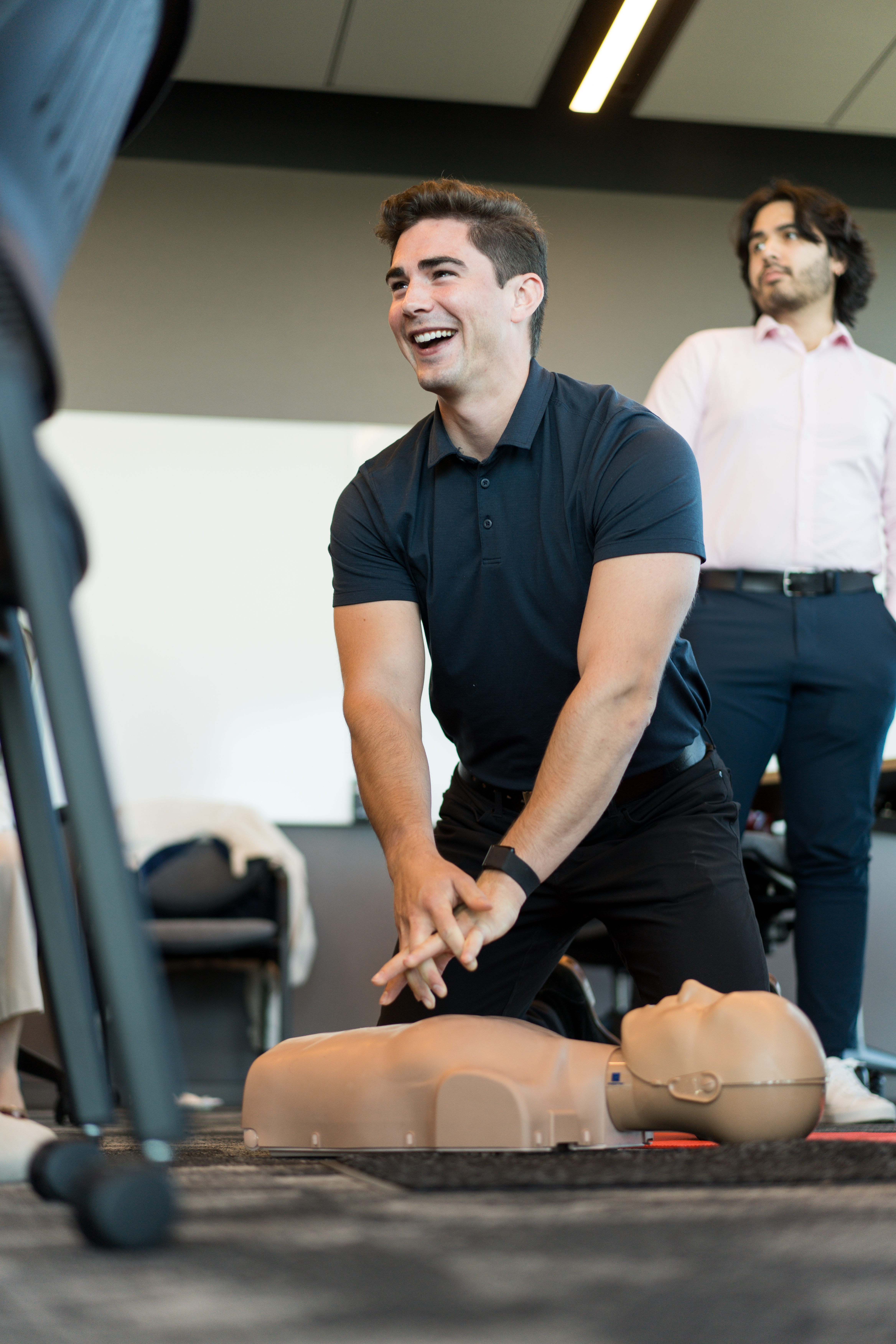Countywide Initiative to Train 1 Million San Diegans in Hands-Only CPR
Cardiopulmonary resuscitation saves lives, like that of Robert Hoadley
Story by:
Published Date
Article Content
At 41 years old, Robert Hoadley was in peak physical condition, training to join the United States Navy Reserves when, without warning, his heart stopped, and he collapsed at work.
In most cases, people experiencing sudden cardiac arrest are nowhere near a hospital. According to the American Heart Association, 90 percent of these people die. However, applying immediate cardiopulmonary resuscitation (CPR) can double or triple a person’s chance of survival.
Hoadley’s coworkers were prepared to act. They immediately began chest compressions, called for an automated external defibrillator (AED) and dialed 911. Emergency responders arrived approximately eight minutes later.
“By reacting quickly and performing CPR, they sustained blood to my brain until the paramedics arrived and they took me to the hospital. They saved my life,” said Hoadley. “The benefit of bystander CPR is that anyone can help. Anyone can be a hero.”
“Every minute I am alive now is a gift.”
A Million Chances to Save a Life
At a press conference on Feb. 26, 2024, the County of San Diego Emergency Medical Services and the Herbert Wertheim School of Public Health and Human Longevity Science at University of California San Diego offered a hands-only CPR training and announced Revive & Survive San Diego, a new initiative created to save lives by training 1 million San Diegans in hands-only CPR.
Revive & Survive San Diego will create a coalition of lifesavers in San Diego County. Local public health, public safety, business, education and community organizations have partnered with Revive & Survive San Diego to offer free hands-only CPR training and perform community outreach across all corners of San Diego County.

“The Revive & Survive San Diego initiative is a perfect example of how a strong academic-community partnership can lead to changing and saving lives,” said UC San Diego Chancellor Pradeep Khosla. “Imagine the impact of 1 million San Diegans performing hands-only CPR. It is an ambitious goal, but I have no doubt that we can achieve it if we work together.”
In 2021, 48 percent of people who experienced an out-of-hospital cardiac arrest in San Diego County received CPR before first responders arrived. More lives could be saved if more people received immediate CPR.
“Cardiac arrest continues to be a leading cause of death across the country,” said Kristi Koenig, M.D., County of San Diego Emergency Medical Services medical director and co-lead of the Revive & Survive San Diego initiative. “No amount of preparedness in a hospital can save a life if the person does not make it into the building. Receiving CPR at the scene will save lives.”
Hands-Only CPR
In recent years, CPR training has transitioned to a hands-only approach. Mouth-to-mouth breathing is no longer essential for saving a life.
Hands-only CPR has been shown to be as effective and requires only two easy steps. First, call 911. Second, perform compressions on a bare chest at 100 to 120 beats per minute.

"We are sending a message that it is not just medical professionals and first responders that can save a life. We all have a responsibility to be there for a family member, friend or stranger when they need us the most," said Criss Brainard, fire chief (retired), San Diego County Fire Chiefs Association.
For every minute without CPR, survival from cardiac arrest decreases by 7 to 10 percent.
“Community CPR education will prepare all of us to perform a lifesaving act when someone is having cardiac arrest,” said Cheryl A.M. Anderson, Ph.D., M.P.H., dean, UC San Diego Herbert Wertheim School of Public Health and Human Longevity Science and co-lead of Revive & Survive San Diego. “San Diego is a perfect place for this bold goal of CPR training for 1 million people. No matter where people live, learn, work, play, or pray we want to increase the chances of surviving a cardiac arrest. We invite all organizations to join us in offering lifesaving training.”
For more information about Revive & Survive San Diego, including opportunities for CPR training, becoming a community partner and supporting the initiative, visit revivesurvive.ucsd.edu.
Share This:
You May Also Like
UC San Diego is Strengthening U.S. Semiconductor Innovation and Workforce Development
Technology & EngineeringStay in the Know
Keep up with all the latest from UC San Diego. Subscribe to the newsletter today.




